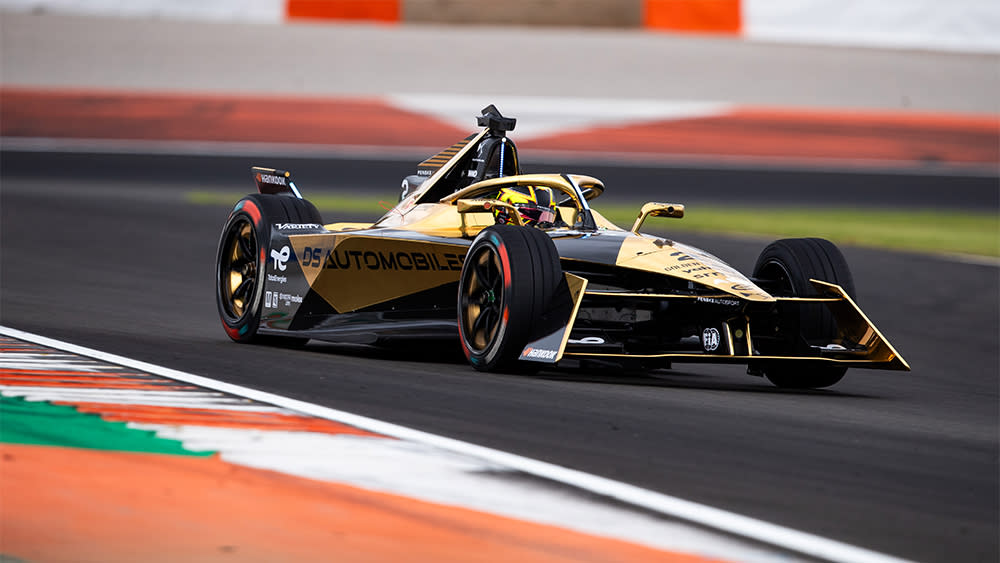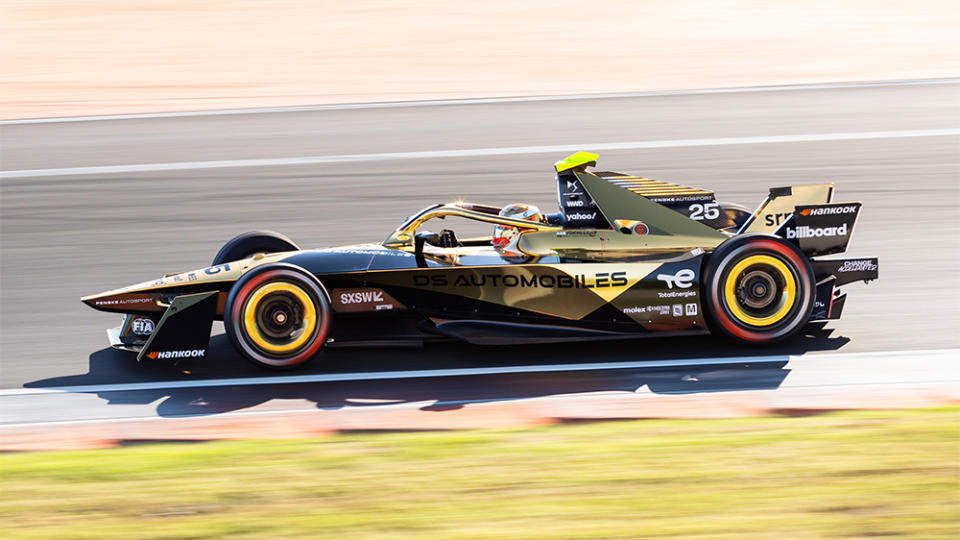First Drive: DS Penske’s Formula E Racer Hugs the Track With 804 HP of Hair-Trigger Aggression

With Formula 1 the hottest ticket in town this past year—assuming Taylor Swift was performing elsewhere—Formula E is experiencing its own popularity bump as it enters its 10th season on January 13 in Mexico City. More than the sound and various rule differences, perhaps even more than hybrid versus zero-emissions power trains, what differentiates the two competition platforms is the level of innovation translated from circuit to consumer. This is where Formula E leaves its gas-fueled counterpart in the dust.
Recently, we got behind the wheel of the third and latest generation of Formula E’s single-seat open-wheel race car. When one is nearly supine in the cockpit of DS Penske’s DS E-Tense FE23, it’s hard to draw a line between this projectile from Tomorrowland and the relatively homogenous EVs on the consumer market. (DS Penske is a partnership between DS Automobiles and Penske Autosport, the latter of which is owned by Robb Report’s parent company, PMC.) That disconnect is only amplified on the initial laps at Italy’s Autodromo di Varano testing ground.
More from Robb Report
This Bonkers New Audi Race Car Is a 640 HP Beast That You Can Also Drive to Work
Lamborghini's Hybrid Hypercar Racer Is Coming-Here's a First Look
Having recently driven some superpowered production EVs in the 1,234 hp Lucid Air Sapphire and the 1,900 hp Pininfarina Battista, I didn’t find the FE23’s instant acceleration as unnerving as its hair-trigger responsiveness and aggression. Plus, despite incredible regenerative braking capabilities (more on which later), and unlike your average Tesla, there’s no one-pedal driving to be had—braking remains the driver’s job. Additionally, as a proper race car, there’s no comprehensive suite of nannies, which I discover exiting the last turn for the first time. Flooring it too soon while entering the straightaway, I send the car into a perfect pirouette, neatly ending up facing where I started. Even with no steering input whatsoever, the back end wants to overtake the front; and like any open-wheeler, it feels like an entirely different species of vehicle compared to a production car. But the correlation is there, and more linear than you’d think.

“Manufacturers like Porsche and Jaguar don’t need the brand exposure from being in a motor series,” says Jeff Dodds, CEO of Formula E. “What they’re getting is direct feedback from the track, which their engineers take away and feed straight back into the process, and it starts to show up in the development of their road cars.” Jaguar claims that competition-derived insights into energy management led to a 10 percent range increase on its I-Pace crossover, while Nissan says it improved battery efficiency for its LEAF EV by 181 percent, thanks to the brand’s participation in the race series.
In the approximately 804 hp FE23, the 250 kw motor in front is used solely for regeneration while a 350 kw motor at the back handles both regen and the 470 hp allowed for propulsion; the combination enables acceleration from zero to 60 mph in 2.0 seconds, a theoretical top speed of 200 mph, and operation at 95 percent efficiency compared to roughly 40 percent with internal-combustion engines. That regen is state of the art—though you can’t feel it while driving. According to Eugenio Franzetti, director of DS Performance, “Forty-five percent of the energy we use during the race is created during the same race.” That means the potential for further weight savings thanks to reduced battery size.
“In standard motorsport, regulations limit development,” says Thomas Chevaucher, Formula E program director for Stellantis. But in Formula E, he says, “we are not limited, so we can go as far as we need and want, opening the way for road-legal cars.” Which means the faster, quicker, and (possibly) wilder it gets on the track, so it goes for a future generation of EVs. Says Dodds, “We’re all learning. We’re on the curve.”
Best of Robb Report
Sign up for Robb Report's Newsletter. For the latest news, follow us on Facebook, Twitter, and Instagram.

